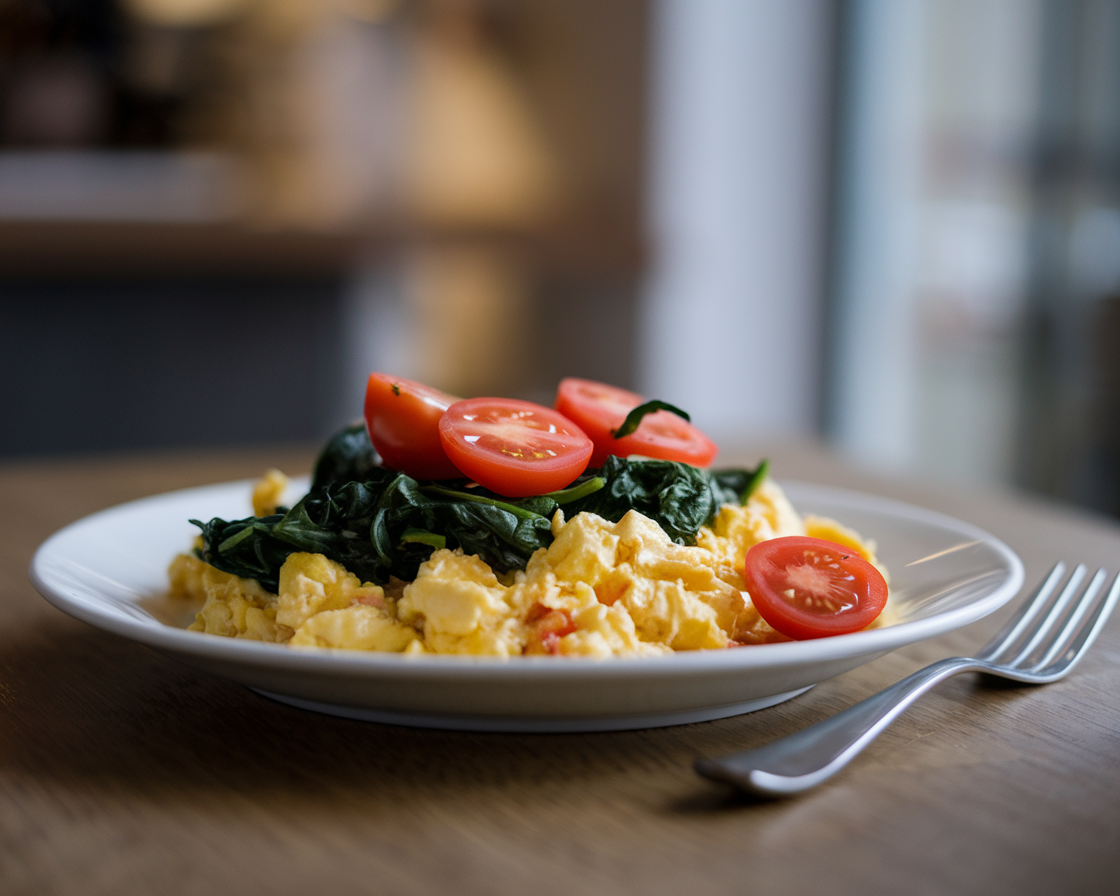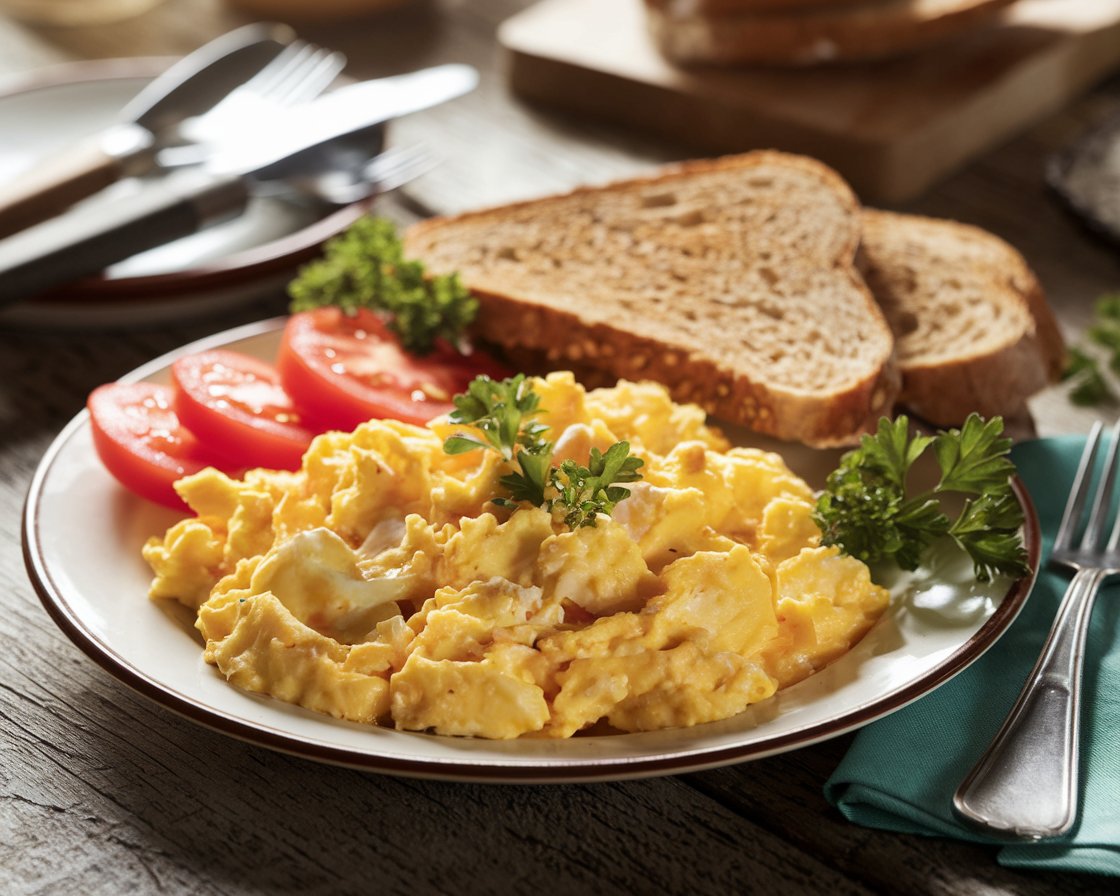Introduction to Scrambled Eggs and Their Nutritional Value
Scrambled eggs. Simple, delicious, and a breakfast staple for good reason! 🥚🍳 Whether you’re rushing out the door or enjoying a leisurely morning, scrambled eggs offer the perfect combination of taste, nutrition, and versatility. But how many calories are in this beloved dish? And how do different cooking methods and add-ins change the nutritional profile? Stick around, because we’re cracking the mystery wide open.
Eggs have long been hailed as a superfood. They’re loaded with protein, essential vitamins, and healthy fats, making them a powerhouse for energy and nutrition. Plus, they’re ridiculously easy to cook. But like anything in the kitchen, the way you prepare your scrambled eggs can significantly impact their calorie count. Let’s break it all down, starting with the basics.
“Scrambled eggs aren’t just a meal—they’re a canvas for creativity and nutrition. The ingredients you choose make all the difference!”
Understanding the Calorie Count in Scrambled Eggs
How Many Calories Are in One Egg?
Let’s start with the foundation: a single large egg contains approximately 70 calories. Most of these calories come from the yolk, which also houses the majority of an egg’s nutrients. The white, on the other hand, is low in calories but high in protein. Together, they’re a nutritional dream team.
The Impact of Cooking Methods on Calorie Content
Here’s where things get interesting. The way you cook your eggs can either keep the calorie count low or send it soaring. Cooking with butter or oil adds fat, which boosts the calorie content. For example:
- Scrambling eggs with 1 teaspoon of butter adds around 35 calories.
- Using a teaspoon of olive oil? That’s an additional 40 calories.
Cooking methods like steaming or using a nonstick pan with minimal fat can keep the calorie count in check.
Common Additions and Their Calorie Impact
Who doesn’t love jazzing up scrambled eggs? Whether it’s cheese, milk, or veggies, these additions can significantly change the nutritional profile:
- Milk (2 tablespoons): Adds around 10 calories.
- Cheese (1 ounce): Adds approximately 110–120 calories, depending on the type.
- Chopped vegetables (½ cup): Adds around 20–25 calories, making them a low-calorie, high-nutrient choice.
Calorie Breakdown of Scrambled Eggs
Scrambled Eggs Without Additions
When you scramble two large eggs in a nonstick pan without any fat or add-ins, you’re looking at a total of 140 calories. This basic version is pure protein goodness and perfect for those watching their calorie intake.
Scrambled Eggs with Butter or Oil
Add a teaspoon of butter to those same two eggs, and the calorie count jumps to around 175 calories. Using olive oil instead? That’s about 180 calories. While the added fat enhances flavor, it also increases the overall calorie count.
Scrambled Eggs with Milk or Cream
Adding a splash of milk makes your eggs creamier and fluffier while keeping the calorie increase modest. Two eggs with 2 tablespoons of milk total around 150 calories. Use cream instead, and you’re looking at closer to 170 calories.
Scrambled Eggs with Vegetables or Cheese
Here’s where the fun (and flavor) begins:
- Two eggs with ½ cup of mixed vegetables: 160 calories.
- Two eggs with 1 ounce of shredded cheddar: 250 calories.
- Add both cheese and vegetables? Expect around 270 calories—a hearty and satisfying option! 🧀🥦
Nutrition Facts (Basic Scrambled Eggs with No Additions)
| Nutrient | Per Serving (2 eggs) |
|---|---|
| Calories | 140 |
| Protein | 12g |
| Total Fat | 10g |
| Saturated Fat | 3g |
| Carbohydrates | 1g |
| Fiber | 0g |
| Sodium | 140mg |
“The beauty of scrambled eggs is their flexibility. With just a few tweaks, you can make them fit almost any diet or craving.”
Comparing Scrambled Eggs to Other Egg Dishes
Calories in Fried Eggs vs. Scrambled Eggs
Fried eggs and scrambled eggs are often compared, but how do they stack up calorie-wise? A single fried egg, cooked with a teaspoon of oil, has about 90 calories. Meanwhile, a single scrambled egg without any fat or add-ins contains 70 calories. The difference grows when you scramble eggs with butter or add milk. If you’re watching calories, scrambled eggs made without fat are the lighter choice.
Scrambled Eggs vs. Boiled Eggs
Boiled eggs are often considered the healthiest option since they don’t require any added fat. One large boiled egg has 70 calories, just like a plain scrambled egg. However, boiled eggs lack the fluffy texture and versatility of scrambled eggs. Scrambled eggs can easily incorporate nutrient-rich add-ins like vegetables, making them a more dynamic option.
How to Make Low-Calorie Scrambled Eggs
Substituting Ingredients to Reduce Calories
Reducing the calorie content of scrambled eggs is easy with a few simple swaps:
- Use egg whites: Skip the yolks and use three egg whites instead of two whole eggs. This drops the calorie count to just 50 calories per serving.
- Swap butter for cooking spray: A nonstick pan with a light spritz of cooking spray cuts out the extra fat and calories from butter or oil.
- Add veggies: Boost the volume of your scrambled eggs without adding significant calories by mixing in low-calorie vegetables like spinach, tomatoes, or mushrooms. A ½ cup of these adds only 20–30 calories while packing in fiber and vitamins.
Cooking Techniques for Healthier Scrambled Eggs
Cooking methods can make a big difference in calorie content:
- Use a nonstick pan to eliminate the need for added fats.
- Cook eggs on low to medium heat to maintain their fluffy texture without burning.
- Avoid heavy creams or cheeses and instead add a splash of almond milk or skim milk for creaminess with fewer calories.

“A few small changes in your ingredients or cooking methods can transform scrambled eggs into a guilt-free, nutrient-packed meal.”
Common Myths and Misconceptions About Scrambled Eggs and Calories
Do Eggs Contribute to Weight Gain?
Eggs themselves aren’t inherently fattening. In fact, their high protein content can help you feel full longer, reducing the likelihood of overeating later. The real culprits are often the add-ins (hello, cheese and butter!) or the sides you pair them with, like bacon or buttery toast.
Is Adding Cheese Always Unhealthy?
Cheese often gets a bad rap, but in moderation, it can be a delicious and nutritious addition. Opt for lighter cheeses like feta or part-skim mozzarella to keep the calorie count in check. Just a sprinkle can go a long way in adding flavor without overloading your meal.
Frequently Asked Questions
Can Scrambled Eggs Be Part of a Weight-Loss Diet?
Absolutely! Scrambled eggs are high in protein, which helps keep you full and satisfied. Pair them with low-calorie vegetables or whole-grain toast for a balanced, nutrient-dense meal that supports weight loss.
Are Free-Range Eggs Lower in Calories?
Free-range eggs aren’t significantly different in calorie content compared to regular eggs, but they often have slightly higher levels of omega-3 fatty acids and vitamins due to the hens’ diets. While the calorie count remains around 70 calories per egg, their nutritional value might be slightly higher.
How Many Calories Are in Egg Substitutes?
Egg substitutes, typically made from egg whites or plant-based ingredients, are lower in calories. A quarter cup of liquid egg substitute (equivalent to one egg) contains about 25 calories, making them a great option for calorie-conscious individuals.
Benefits of Including Scrambled Eggs in Your Diet
High Protein, Low Calorie: The Perfect Balance
Scrambled eggs are an excellent source of high-quality protein, offering about 12 grams per serving (2 eggs). Protein is essential for building and repairing muscles, boosting metabolism, and keeping hunger at bay. Plus, their relatively low calorie count makes them a smart choice for those managing their weight.
Nutrient Density of Eggs
Eggs are packed with essential nutrients, including:
- Choline: Supports brain health and cognitive function.
- Vitamin D: Strengthens bones and supports the immune system.
- B vitamins: Aid in energy production and red blood cell formation.
By incorporating scrambled eggs into your diet, you’re fueling your body with vital nutrients in a delicious package.
If you’re looking to elevate your scrambled eggs into a complete and balanced meal, there are some fantastic options that pair wonderfully with them. For a breakfast or brunch idea that’s as nutritious as it is delicious, try our Avocado Toast Recipe with Egg and Apples. This recipe combines creamy avocado, perfectly cooked eggs, and crisp apple slices to create a dish that’s full of contrasting textures and flavors. The rich creaminess of avocado enhances the protein-packed goodness of scrambled eggs, while the apples add a touch of sweetness and crunch, making it a well-rounded meal perfect for any time of day.
For those aiming to pack more nutrients into their meals, why not pair your scrambled eggs with our Quinoa Rice: The Perfect Blend of Nutrition and Taste? This versatile recipe blends the nutty richness of quinoa with the comforting texture of rice, creating a side dish that’s both satisfying and nutrient-dense. The combination of scrambled eggs and quinoa rice offers a powerhouse of protein, fiber, and essential vitamins, making it an ideal option for those who want to eat healthily without sacrificing taste.
By adding these recipes to your scrambled eggs, you can turn a simple dish into an indulgent yet nutritious meal. These pairings not only boost the flavor profile but also provide a variety of nutrients to support a balanced diet. Your taste buds—and your body—will thank you!
“Eggs are more than just a breakfast staple—they’re a powerhouse of nutrition that can fit into any meal plan, whether you’re aiming for weight loss or muscle gain.”
Conclusion
Scrambled eggs are a versatile, nutritious, and downright delicious addition to your diet. Whether you’re enjoying them plain or dressed up with your favorite ingredients, they’re an easy way to pack in protein and essential nutrients without breaking the calorie bank. Plus, with a few simple adjustments, you can tailor them to suit almost any dietary preference or goal.
So, the next time you crack an egg, think beyond basic breakfast. With scrambled eggs, the possibilities are endless, and every bite is a step toward a healthier, happier you. 🍳🥚✨

